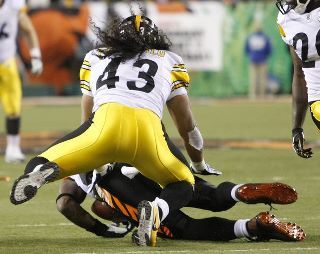Post by misty on Jan 7, 2007 0:36:27 GMT -5
Charlie Girl
www.dyslexia-ca.org/dysgraphia.htm
©Regina G. Richards . Excerpts from When Writing's A Problem: Understanding Dysgraphia .
This is a small portion of the entire article. If you suspect dysgraphia, it would be wise to read the entire article.
Dysgraphia is defined as a difficulty in automatically remembering and mastering the sequence of muscle motor movements needed in writing letters or numbers. This difficulty is out of harmony with the person's intelligence, regular teaching instruction, and (in most cases) the use of the pencil in non-learning tasks. It is neurologically based and exists in varying degrees, ranging from mild to moderate. It can be diagnosed, and it can be overcome if appropriate remedial strategies are taught well and conscientiously carried out. ----------
An astute teacher or parent may suspect dysgraphia in a student by observing writing performances. All too often, however, the student's performance is interpreted as poor motivation, carelessness, laziness, or excessive speed. While these observations may be very real, they are on the surface, and the underlying cause may be a dysgraphic pattern which is not within the student's control. Specific symptoms which may be noted include:
Cramped fingers on writing tool
Odd wrist, body and paper positions
Excessive erasures
Mixture of upper and lower case letters
Mixture of printed and cursive letters
Inconsistent letter formations and slant
Irregular letter sizes and shapes
Unfinished cursive letters
Misuse of line and margin
Poor organization on the page
Inefficient speed in copying
General illegibility
Decreased speed of writing
Decreased speed of copying
Inattentiveness about details when writing
Frequently needs verbal cues and sub-vocalizing
Relies heavily on vision to monitor what the hand is doing during writing
Slowly implements verbal directions that involve sequencing and planning
Heres another list from a different site as well:
Signs of dysgraphia
[image]
* Generally illegible writing (despite appropriate time and attention given the task
* Inconsistencies : mixtures of print and cursive, upper and lower case, or irregular sizes, shapes, or slant of letters
* Unfinished words or letters, omitted words
* Inconsistent position on page with respect to lines and margins
* Inconsistent spaces between words and letters
* Cramped or unusual grip, especially
o holding the writing instrument very close to the paper, or
o holding thumb over two fingers and writing from the wrist
* Strange wrist, body, or paper position
* Talking to self while writing, or carefully watching the hand that is writing
* Slow or labored copying or writing - even if it is neat and legible
* Content which does not reflect the student's other language skills
What to do
* Accommodate -- reduce the impact that writing has on learning or expressing knowledge -- without substantially changing the process or the product.
* Modify -- change the assignments or expectations to meet the student's individual needs for learning
* Remediate - provide instruction and opportunity for improving handwriting
Accommodations
When considering accommodating or modifying expectations to deal with dysgraphia, consider changes in
1. The rate of producing written work
2. The volume of the work to be produced
3. The complexity of the writing task
4. The tools used to produce the written product
5. The format of the product
Click the link to read on. Theres TONS of great ideas & modifications you can use!!
www.ldonline.org/article/6202
www.dyslexia-ca.org/dysgraphia.htm
©Regina G. Richards . Excerpts from When Writing's A Problem: Understanding Dysgraphia .
This is a small portion of the entire article. If you suspect dysgraphia, it would be wise to read the entire article.
Dysgraphia is defined as a difficulty in automatically remembering and mastering the sequence of muscle motor movements needed in writing letters or numbers. This difficulty is out of harmony with the person's intelligence, regular teaching instruction, and (in most cases) the use of the pencil in non-learning tasks. It is neurologically based and exists in varying degrees, ranging from mild to moderate. It can be diagnosed, and it can be overcome if appropriate remedial strategies are taught well and conscientiously carried out. ----------
An astute teacher or parent may suspect dysgraphia in a student by observing writing performances. All too often, however, the student's performance is interpreted as poor motivation, carelessness, laziness, or excessive speed. While these observations may be very real, they are on the surface, and the underlying cause may be a dysgraphic pattern which is not within the student's control. Specific symptoms which may be noted include:
Cramped fingers on writing tool
Odd wrist, body and paper positions
Excessive erasures
Mixture of upper and lower case letters
Mixture of printed and cursive letters
Inconsistent letter formations and slant
Irregular letter sizes and shapes
Unfinished cursive letters
Misuse of line and margin
Poor organization on the page
Inefficient speed in copying
General illegibility
Decreased speed of writing
Decreased speed of copying
Inattentiveness about details when writing
Frequently needs verbal cues and sub-vocalizing
Relies heavily on vision to monitor what the hand is doing during writing
Slowly implements verbal directions that involve sequencing and planning
Heres another list from a different site as well:
Signs of dysgraphia
[image]
* Generally illegible writing (despite appropriate time and attention given the task
* Inconsistencies : mixtures of print and cursive, upper and lower case, or irregular sizes, shapes, or slant of letters
* Unfinished words or letters, omitted words
* Inconsistent position on page with respect to lines and margins
* Inconsistent spaces between words and letters
* Cramped or unusual grip, especially
o holding the writing instrument very close to the paper, or
o holding thumb over two fingers and writing from the wrist
* Strange wrist, body, or paper position
* Talking to self while writing, or carefully watching the hand that is writing
* Slow or labored copying or writing - even if it is neat and legible
* Content which does not reflect the student's other language skills
What to do
* Accommodate -- reduce the impact that writing has on learning or expressing knowledge -- without substantially changing the process or the product.
* Modify -- change the assignments or expectations to meet the student's individual needs for learning
* Remediate - provide instruction and opportunity for improving handwriting
Accommodations
When considering accommodating or modifying expectations to deal with dysgraphia, consider changes in
1. The rate of producing written work
2. The volume of the work to be produced
3. The complexity of the writing task
4. The tools used to produce the written product
5. The format of the product
Click the link to read on. Theres TONS of great ideas & modifications you can use!!
www.ldonline.org/article/6202




